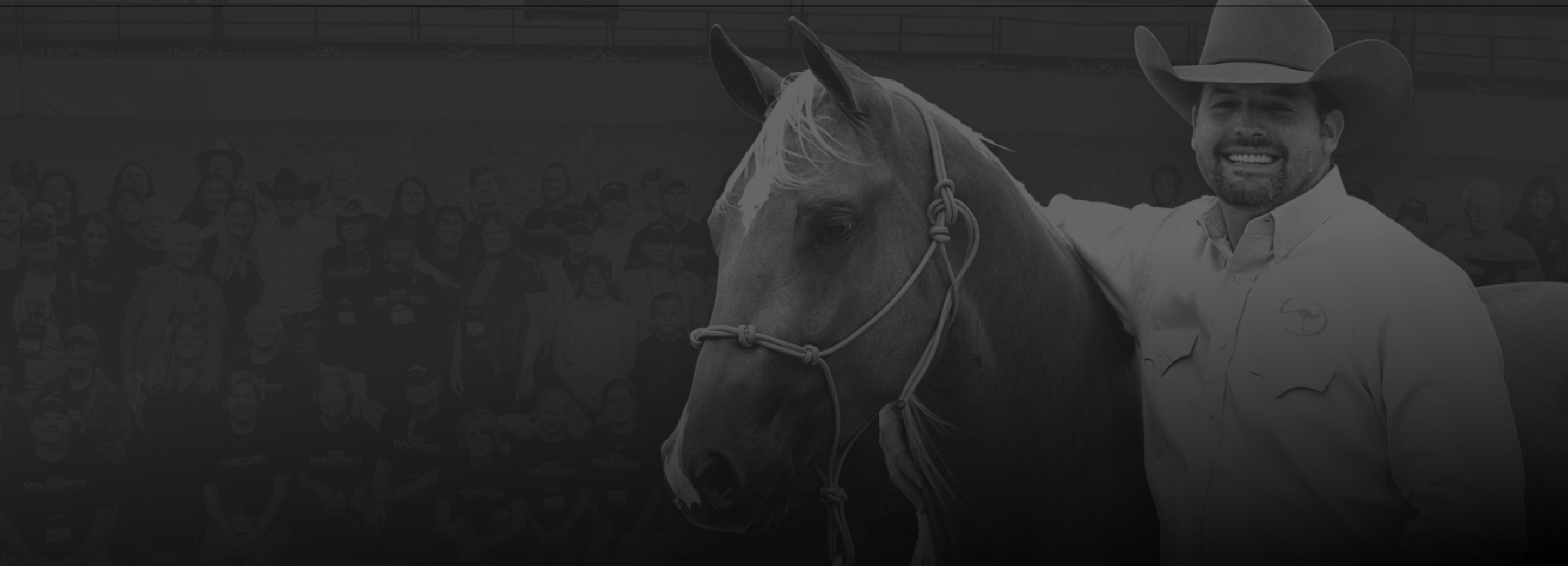For the past 20 years, Clinton Anderson from Downunder Horsemanship has devoted his life to creating the best training tools and videos available to help train your horse, regardless of their problem. He believes that it’s training the owners that poses a real issue. Join him as he tackles some of the most challenging situations with problem horses and with problem owners. This week, we learn how to choose the right size of support boot for your horse.
In today’s episode, Clinton continues answering questions from his Downunder Horsemanship fans. The question today comes from Ellen all the way in North Dakota. She wrote in and asked Clinton what size of Legacy Boots she should use on her horse. The Classic Legacy System Front Boots and Hind Boots are available in our Downunder Horsemanship store. The boots provide optimum comfort to your horse. However, you need to make sure you get the right size to keep your horse comfortable and protect his legs.
The best way to know what size boot to get your horse is to measure your horse’s legs and refer to the Boot Sizing Guide. Clinton uses medium-sized boots on most of his horses because they’re smaller Quarter Horses, generally around 14-hands. For horses that are around 15-hands or larger, you’ll need to use a large or extra-large. For horses that are smaller than 14-hands, you’ll likely need to use a size small boot.
At the end of the day, if you’re stuck between two sizes, Clinton recommends getting a boot that’s a little bigger rather than choosing a boot that’s too small. A boot that’s too small for a horse’s leg will cause issues.
Clinton typically uses front support boots on his horses. He uses back support boots along with front boots when he’s doing a lot of training that requires the horse to really use his hind end. For example, if he’s working cows. He’ll also use hind boots when working over obstacles if the horse is a lazier-type horse that drags his feet. Using hind boots in that situation helps to protect to protect the horse. Working your horse over obstacles is one of the best ways to keep him engaged with his training. However, before attempting obstacles, you must start with the Fundamentals level of the Method and master all of the techniques from the ground up so that you have a way of communicating with your horse. Then you can add in obstacles and move on to the Intermediate and Advanced levels of the Method. Moving through Clinton’s method of training horses will keep your horse engaged and help him learn along the way. Remember, variety keeps it interesting. That’s why Clinton loves using the obstacle course during his trainings alongside the materials in the Downunder shop.
The Downunder Horsemanship Method is the key to getting the most out of your partnership with your horse and we want everybody to experience the difference it will make. That’s why we created three ways for you to get the training content you need at the price you want. Our basic level allows you to purchase and download training content to your device at our standard price with no annual fee. When you become a No Worries Club member for $19.99 a month, you get up to 50% discount on any of your purchases. You’ll also get eight digital videos and four digital journals a year and access to the No Worries Club website, the largest collection of Clinton Anderson training material and resources in the world. If you want the ultimate experience, the premium membership is for you. You get all the benefits of the No Worries Club and access to all the Downunder Horsemanship Method and the professional series kit training videos. Altogether, that’s thousands of dollars of horse training and 20 years of horsemanship delivered right to your fingertips.
Start your digital training experience today. Visit our homepage and download the Downunder Horsemanship app to experience the Clinton Anderson method of horsemanship in a whole new way.

Master Your horsemanship Skills
Like these tips? Join the No Worries Club and hone your skills with thousands of hours of Clinton’s easy, step-by-step method horse training videos.



